How to Install Python on Windows
Method 1 of 3:
Installing Python 3
-
 Go to https://www.python.org/downloads. The most recent version of Python will always appear on the "Download" button near the top of the page.
Go to https://www.python.org/downloads. The most recent version of Python will always appear on the "Download" button near the top of the page.- If you want to use Python 2, see the "Installing Python 2" method.
-
 Click Download Python . If this does not start the download immediately, click Save on the pop-up window to start it.
Click Download Python . If this does not start the download immediately, click Save on the pop-up window to start it.- Python 3.7 and newer will run on any Windows operating system except Windows XP. If you need to install Python 3 on XP, scroll down and click Download next to the most recently-updated version of Python 3.4.[1]
-
 Run the installer. You can do so by double-clicking python-.exe in your Downloads folder.
Run the installer. You can do so by double-clicking python-.exe in your Downloads folder. -
 Check the box next to "Add Python to PATH." It's at the bottom of the window.
Check the box next to "Add Python to PATH." It's at the bottom of the window.- If you don't see this option, you'll need to complete this method after you finish installing Python.
-
 Click Customize installation. It's the second blue link on the window.
Click Customize installation. It's the second blue link on the window. -
 Review the installation options and click Next. All of Python's features are selected by default. Unless you have a specific need to skip installing any part of this package, just leave these settings alone.
Review the installation options and click Next. All of Python's features are selected by default. Unless you have a specific need to skip installing any part of this package, just leave these settings alone. -
 Check the box next to "Install for all users." If you're a system administrator, this option ensures that other users on this computer are able to use Python. This also changes the installation location to the Program Files(x86)Python(version) instead of your personal library.
Check the box next to "Install for all users." If you're a system administrator, this option ensures that other users on this computer are able to use Python. This also changes the installation location to the Program Files(x86)Python(version) instead of your personal library.- If you didn't have the option to select "Add Python to PATH" earlier, make note of the installation directory that appears here. You'll need to add it to your system variables after installing.
- If you don't want anyone else on the computer to be able to use Python, you can leave the box unchecked.
-
 Click Install. It's at the bottom of the window.
Click Install. It's at the bottom of the window. -
 Click Yes to confirm. This installs Python on your PC. Once the installation is complete, you'll see a "Setup was successful" window—don't close it just yet.
Click Yes to confirm. This installs Python on your PC. Once the installation is complete, you'll see a "Setup was successful" window—don't close it just yet. -
 Click Disable path length limit. It's toward the bottom of the "Setup was successful" window. This final step ensures that Python (and other apps) to use paths more than 260 characters in length.
Click Disable path length limit. It's toward the bottom of the "Setup was successful" window. This final step ensures that Python (and other apps) to use paths more than 260 characters in length. -
 Click Yes to confirm. Python is now installed and ready to use.
Click Yes to confirm. Python is now installed and ready to use. -
 Click Close to exit the installer.
Click Close to exit the installer. -
 Test your Python installation. Here's how to make sure the path is set up properly:
Test your Python installation. Here's how to make sure the path is set up properly:- Type cmd into the Windows search bar and press ↵ Enter.
- Type python and press ↵ Enter. You should see >>> at the beginning of the current line. This means Python is working and the path is set correctly.
- If you see an error that says "python is not recognized as an internal or external command," see the "Adding the Python Path to Windows" method.
- Type exit() to return to the command prompt.
Method 2 of 3:
Installing Python 2
-
 Go to https://www.python.org/downloads in a web browser. Use this method if you want to write code in Python 2 instead of (or in addition to) Python 3 in Windows.
Go to https://www.python.org/downloads in a web browser. Use this method if you want to write code in Python 2 instead of (or in addition to) Python 3 in Windows. -
 Scroll down and click a Python 2 version. The versions appear under the "Looking for a specific release?" header.
Scroll down and click a Python 2 version. The versions appear under the "Looking for a specific release?" header.- If you don't know which version of Python 2 to install, just click the first version beginning with "2." In the list. This ensures you're using the most recently-updated version.
-
 Scroll down and select an installer. This downloads the installer to your computer, though you may have to click Save to start the download.
Scroll down and select an installer. This downloads the installer to your computer, though you may have to click Save to start the download.- If you have a 64-bit computer, select Windows x86-64 MSI installer.
- If you're using a 32-bit computer, select Windows x86 MSI installer.
-
 Run the Python installer. You can do this by double-clicking python-(version).msi in your Downloads folder.
Run the Python installer. You can do this by double-clicking python-(version).msi in your Downloads folder. -
 Select an option for installing. If you want other users of this PC to be able to use Python, select Install for all users. If not, select Install for just me.
Select an option for installing. If you want other users of this PC to be able to use Python, select Install for all users. If not, select Install for just me. -
 Click Next. It's at the bottom-right corner.
Click Next. It's at the bottom-right corner. -
 Select an install directory (optional). The default directory is fine for most people, but you can change it if you wish by selecting a different folder from the menu.
Select an install directory (optional). The default directory is fine for most people, but you can change it if you wish by selecting a different folder from the menu. -
 Click Next.
Click Next. -
 Scroll down to the bottom of the "Customize Python" features list. You should see an option called "Add python.exe to Path." It probably has an "X" on its corresponding button.
Scroll down to the bottom of the "Customize Python" features list. You should see an option called "Add python.exe to Path." It probably has an "X" on its corresponding button.- If you don't see this option, see this method after installing Python.
-
 Click the X button next to "Add python.exe to Path." A menu will expand.
Click the X button next to "Add python.exe to Path." A menu will expand. -
 Click Will be installed on local hard drive. This ensures that you can run Python commands from anywhere without having to type the full path to Python.
Click Will be installed on local hard drive. This ensures that you can run Python commands from anywhere without having to type the full path to Python. -
 Click Next. A security pop-up will appear on most systems at this point.
Click Next. A security pop-up will appear on most systems at this point. -
 Click Yes to continue. This installs Python 2 on the PC. In a few moments, you'll see a window that says "Complete the Python Installer."
Click Yes to continue. This installs Python 2 on the PC. In a few moments, you'll see a window that says "Complete the Python Installer." -
 Click Finish on the installer. Python is now installed.
Click Finish on the installer. Python is now installed. -
 Test your Python installation. Here's how to make sure the path is set up properly:
Test your Python installation. Here's how to make sure the path is set up properly:- Type cmd into the Windows search bar and press ↵ Enter.
- Type python and press ↵ Enter. You should see >>> at the beginning of the current line. This means Python is working and the path is set correctly.
- If you see an error that says "python is not recognized as an internal or external command," see the "Adding the Python Path to Windows" method.
- Type exit() to return to the command prompt.
Method 3 of 3:
Adding the Python Path to Windows
-
 Press ⊞ Win+R to open the Run dialog. Use this method if you're installing an older version or see the "python is not recognized as an internal or external command" error when trying to use Python.
Press ⊞ Win+R to open the Run dialog. Use this method if you're installing an older version or see the "python is not recognized as an internal or external command" error when trying to use Python. -
 Type sysdm.cpl and click OK. This opens the System Properties dialog.
Type sysdm.cpl and click OK. This opens the System Properties dialog. -
 Click the Advanced tab. It's at the top of the window.
Click the Advanced tab. It's at the top of the window. -
 Click Evironment Variables. It's near the bottom of the window.
Click Evironment Variables. It's near the bottom of the window. -
 Select the Path variable under "System variables." This is in second group of variables (not the "User variables" group on top).
Select the Path variable under "System variables." This is in second group of variables (not the "User variables" group on top). -
 Click Edit. It's at the bottom of the window.
Click Edit. It's at the bottom of the window. -
 Edit the variables on Windows Vista and earlier. If you're using Windows 10, 8, or 7, skip to the next step. If you're using XP or Vista:
Edit the variables on Windows Vista and earlier. If you're using Windows 10, 8, or 7, skip to the next step. If you're using XP or Vista:- Click inside the "Variable value" box to deselect the selected text.
- Scroll all the way to the end of the text that's already in the "Variable value" box.
- Type a semicolon ; at the end of the text (no spaces).
- Type the full path to Python (e.g., C:Python27) right after the semicolon.
- Type a semicolon ; at the end of what you just typed (no spaces).
- Type the full path again, but add Scripts to the end. Example: C:Python27Scripts;C:Python27Scripts.
- Click OK until you've closed all windows, and then restart your PC. No need to continue with this method.[2]
-
 Click New. It's the first button near the top-right corner of the window.
Click New. It's the first button near the top-right corner of the window. -
 Enter the full path to Python. For example, if Python installed to C:Python27, type that into the field.
Enter the full path to Python. For example, if Python installed to C:Python27, type that into the field. -
 Press ↵ Enter. Now you'll have to enter just one more path.
Press ↵ Enter. Now you'll have to enter just one more path. -
 Click New again.
Click New again. -
 Enter the full path to the Python "Scripts" directory. This is the same path as you typed before, except you'll be adding Scripts to the end.
Enter the full path to the Python "Scripts" directory. This is the same path as you typed before, except you'll be adding Scripts to the end.- For example, C:Python27Scripts.
-
 Press ↵ Enter. Your new variables are saved.
Press ↵ Enter. Your new variables are saved. -
 Click OK and then OK again. You should now be able to run Python from the command line just by typing python.
Click OK and then OK again. You should now be able to run Python from the command line just by typing python.
5 ★ | 1 Vote
You should read it
- Array in Python
- How to Launch Python Files Using Windows Command Prompt
- How to Use Windows Command Prompt to Run a Python File
- Python data type: string, number, list, tuple, set and dictionary
- Multiple choice quiz about Python - Part 4
- How to Set the Path in Java
- Built-in Python functions
- Python online editor
May be interested
- How to Install Python Packages on Windows 7
 you want to use python on a windows 7 machine but you don't know what you're doing. what you do know is that in order to go anywhere and do anything you've got to install packages. or maybe you don't even know that yet. take a look at the...
you want to use python on a windows 7 machine but you don't know what you're doing. what you do know is that in order to go anywhere and do anything you've got to install packages. or maybe you don't even know that yet. take a look at the... - For in Python loop
 in this article, we will learn more about for for loop in python as well as its variations, how to use for to repeat a string of elements in python such as list, string or other iterative objects.
in this article, we will learn more about for for loop in python as well as its variations, how to use for to repeat a string of elements in python such as list, string or other iterative objects. - Manage files and folders in Python
 python also provides a variety of methods to handle various directory-related operations. in this article, we will learn about managing files and directories in python, namely creating folders, renaming folders, listing folders and working with them.
python also provides a variety of methods to handle various directory-related operations. in this article, we will learn about managing files and directories in python, namely creating folders, renaming folders, listing folders and working with them. - How to install Python plugin to be able to execute Python programming on IntelliJ
 is it possible to program python on intellij idea? instructions on setting up, installing python plugin to be able to program python on intellij ...
is it possible to program python on intellij idea? instructions on setting up, installing python plugin to be able to program python on intellij ... - Multiple choice quiz about Python - Part 3
 today's topic quantrimang wants to challenge you is about file and exception handling in python. let's try the following 15 questions!
today's topic quantrimang wants to challenge you is about file and exception handling in python. let's try the following 15 questions! - How to Set Up a Python Environment for Deep Learning
 setting up a python-based machine learning (ml) environment on a particular platform can be somewhat challenging if you don't have the right resources. you would need to install python first and then add a number of different packages. to...
setting up a python-based machine learning (ml) environment on a particular platform can be somewhat challenging if you don't have the right resources. you would need to install python first and then add a number of different packages. to... - 5 choose the best Python IDE for you
 in order to learn well python, it is essential that you find yourself an appropriate ide to develop. quantrimang would like to introduce some of the best environments to help improve your productivity.
in order to learn well python, it is essential that you find yourself an appropriate ide to develop. quantrimang would like to introduce some of the best environments to help improve your productivity. - What is Python? Why choose Python?
 python is a powerful, high-level, object-oriented programming language, created by guido van rossum. python is easy to learn and emerging as one of the best introductory programming languages for people who are first exposed to programming languages.
python is a powerful, high-level, object-oriented programming language, created by guido van rossum. python is easy to learn and emerging as one of the best introductory programming languages for people who are first exposed to programming languages. - Module time in Python
 python has a time module used to handle time-related tasks. tipsmake.com will work with you to find out the details and functions related to the time specified in this module. let's follow it!
python has a time module used to handle time-related tasks. tipsmake.com will work with you to find out the details and functions related to the time specified in this module. let's follow it! - Python data type: string, number, list, tuple, set and dictionary
 in this section, you'll learn how to use python as a computer, grasp python's data types and take the first step towards python programming.
in this section, you'll learn how to use python as a computer, grasp python's data types and take the first step towards python programming.
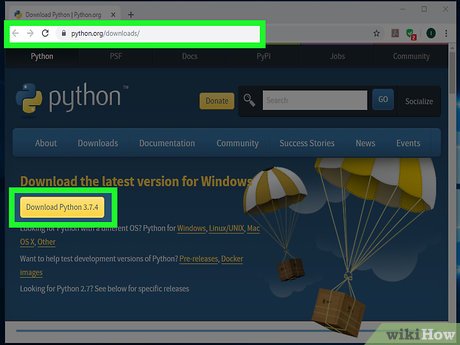
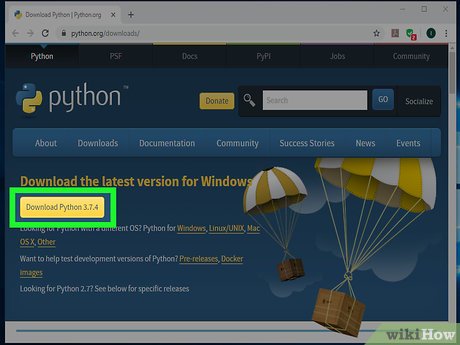
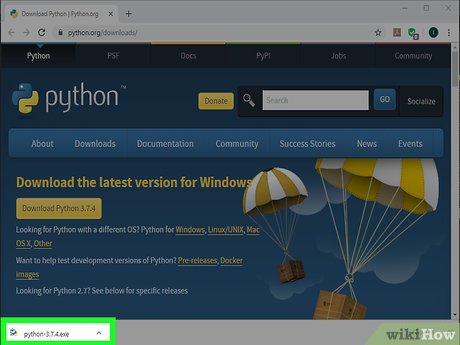



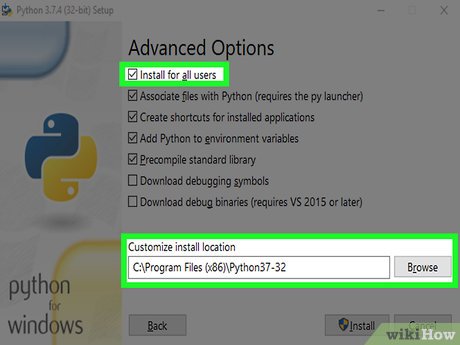
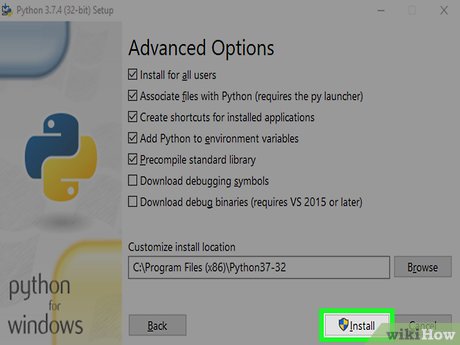

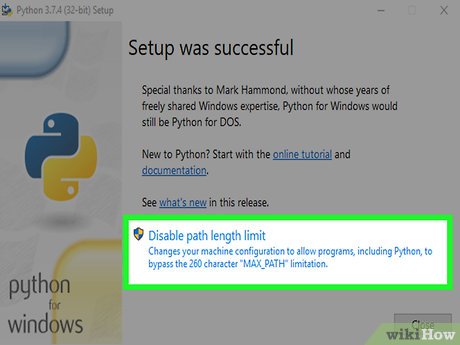










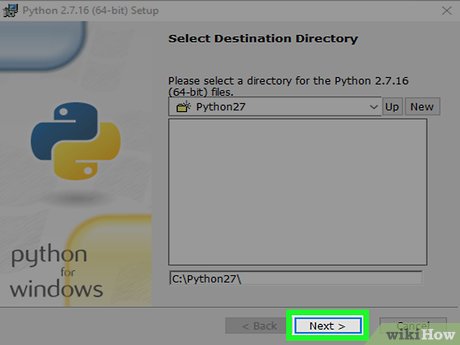































 How to Delete Run History in Windows
How to Delete Run History in Windows How to Map a Folder to a Drive Letter in Windows
How to Map a Folder to a Drive Letter in Windows How to Resolve System 32 Error in Windows Operating System
How to Resolve System 32 Error in Windows Operating System How to Set Up an Ad Hoc Peer to Peer Network
How to Set Up an Ad Hoc Peer to Peer Network How to Zip Folder on Windows
How to Zip Folder on Windows How to Make a Brief Case on Windows
How to Make a Brief Case on Windows